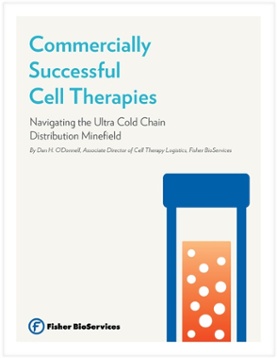
Cell Therapy Clinical Trials: Navigating the operational shift from Phase 1 to Phase 2
When navigating through the various phases of a Cell Therapy clinical trial, it’s important that each phase “sets the stage” for those which follow. All activities that take place in Phase 1 will ultimately impact Phase 2, and so on through to commercialization. This blog will focus on the operational shift from Phase 1 to Phase 2 and the associated challenges with doing so.
Phase 1
The management of Phase 1 of a Cell Therapy clinical trial is fairly straightforward. It typically will include 8-10 patients, all of whom are being treated at a single institution. In many cases this institution could be both the manufacturer and administration site. Because the sponsor and investigator work so closely together processes are standardized and need for complex logistics is minimal.
However, while managing Phase 1 may be fairly straightforward, it’s important to not lose sight of the increased complexity that is to come. As you move into Phase 2, the increased number of patients and institutions will ultimately require additional standardization and coordination.
Phase 2
As you enter Phase 2 of a Cell Therapy clinical trial, the number of patients involved increases significantly. In addition you will need to work with multiple investigative sites in various geographic locations. It is necessary to formalize handling process, thawing technique, administration technique and the materials used for administration. Written instructions should accompany each shipment. For complex administrations or to insure the uniformity of each administration, administrative kits can be utilized. These kits should contain all of the components required to administer treatment that is consistent with the sponsor’s administration procedure. The more complex the administration procedure the more critical the kit but in all cases an administrative kit helps insure that differences in outcomes are not caused by a modified technique or substituted component at the investigative site. Since the folks interacting with participants are more dispersed, it’s important to standardize your processes to the degree that you are comfortable with. The increased number of sites will also impact the complexity of logistics so careful planning is required for each planned transit route.
Planning for the future – Phase 3 and Commercialization
Transitioning from Phase 2 to Phase 3 will be easier if you have instituted standardization safeguards in Phase 2. Phase 3 is an exponential leap in complexity. As the number of participating investigative sites and the number of patients treated increase the sponsor’s control of the process decreases. Well designed processes created in Phase 2 will help insure the success of Phase 3. Phase 3 is a dry run for commercialization so as you develop a plan, be sure it is capable of taking you through start up commercialization. You do not want to attempt to make material changes to either your administration process or logistics strategy between Phase 3 and commercial distribution as it will cost a great deal in both time and money.
 Do you have a cell-based therapy in development? If so, there are several variables that must be addressed to ensure you don’t inadvertently limit your product’s scalability and commercial viability, incur uneccesary costs and complications downstream, or fail to meet FDA criteria for documentation of cold chain requirements. For more information, please see the eBook Commercially Successful Cell Therapies: Navigating the Ultra Cold Chain Distribution Minefield to learn more about how to mitigate these challenges.
Do you have a cell-based therapy in development? If so, there are several variables that must be addressed to ensure you don’t inadvertently limit your product’s scalability and commercial viability, incur uneccesary costs and complications downstream, or fail to meet FDA criteria for documentation of cold chain requirements. For more information, please see the eBook Commercially Successful Cell Therapies: Navigating the Ultra Cold Chain Distribution Minefield to learn more about how to mitigate these challenges.